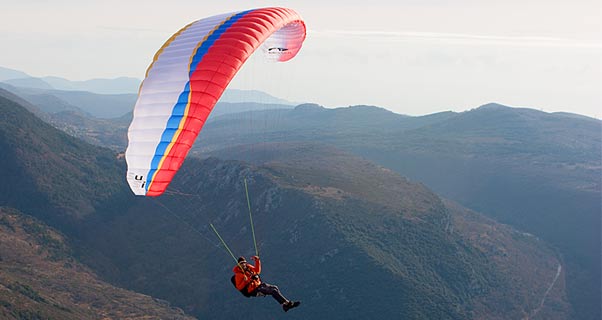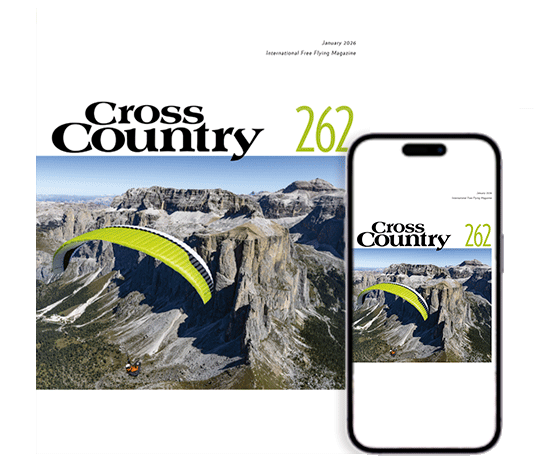
This tip comes from 50 Ways to Fly Better by Bruce Goldsmith and friends, and is about wing loading
People often ask how heavy they should be relative to the weight range on their wing.
The aerodynamic effects of wing loading are fairly simple, but the choice of loading depends on where you fly, how you fly, and what you want to get out of your flying.
Wing-loading doesn’t affect glide (unless the wing is distorted by the weight): you just go down the same glide angle at a higher speed if you are heavier.
Increasing wing loading increases speed by only the square root of the weight change. On any particular glider if you can double your weight without distorting the wing then your speed will go up by a factor of 1.41.
Carrying ballast to increase speed is almost always a waste of time in recreational flying. Even if you carry 10kg of ballast, your speed only goes up by about 3%.
A 3% increase in speed means going from a trim speed of 36km/h to 37.08km/h: not very dramatic – and certainly not enough to stop you being blown over the back of the hill if the wind picks up.
However, in competition small differences matter, and the topguns burning down final glide at 65km/h, block-to-block on speed bar, might give anything for a 3% increase in speed.
More about Fifty ways to Fly Better
Tuesday Tips are sent directly to our readers’ mailboxes every week. If you want to receive them sign up to our newsletter in the sidebar.










